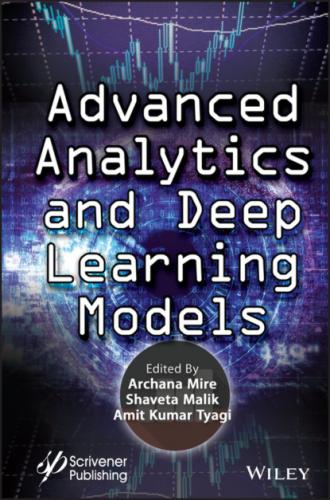They also have shown the graphical implementation of this table which is in both non-clustering and clustering environments. The Mahalanobis distance–based method gives better result than the Pearson collaborative recommender approach. If the mean absolute error values are lower, then it means it is a better result. By that result, we can also see that the non-clustering–based technique always have less performance than clustering approaches. So, the clustering approach is better [2].
Table 3.4 Comparison among clustering and non-clustering approach.
| Approach | MAE (non-clustering) | MAE (clustering) |
|---|---|---|
| PCRS | 2.4577 | 2.2734 |
| MDRS | 2.3094 | 2.1751 |
Figure 3.6 Result.
They have consolidated the multiple-criteria ratings into the conventional CF-based recommender system using K-means algorithm. Their method treats the third dimensional as multi-criteria, the clustering parameters as the clustering parameter of the clients, to handle the dimensionality. Their approach depends on thinking like each user has unique opinion and criteria. Therefore, to compare each user, the most important concern of this work is to find out clients’ segments with alike client. Mahalanobis distance method is used here to create most exact neighbors for every client within the cluster. In the result, we can clearly see that this technique is more effective and accurate than the traditional approach [2].
3.5 Advantages of Multi-Criteria Recommender System
Multi-criteria recommender system is used to make user experience easier or make things easy for each and every user. If we take a look on business perspective, then this system is used to grow a business.
Table 3.5 Comparison among existing methods in MCRS.
| Author name | Research work | Work done | Method name | Challenges |
|---|---|---|---|---|
| Yong Zheng | Utility-Based Multi-Criteria Recommender System (2019) | Implemented a new recommender system approach which dominates many the traditional approaches. | Utility-based approach. | Issue of overexpectation, which may contribute finer-grained recommendation models |
| Dharahas Tallapally, Rama Syamala Sreepada, Bidyut kr. Patra, Korra Sathya Babu | User Preference Learning in Multi-Criteria Recommendation Using Stacked Auto Encoders | Implemented a recommender system using extended version of autoencoder named as stacked autoencoder. | Stacked Autoencoder, An unsupervised deep neural network approach. | This approach is still now in improvement state, and this approach cannot work in user review system. |
| Mohammed Wasid, Rashid Ali | An Improved recommender System based on Multi-criteria Clustering Approach (2018) | Implemented Multicriteria recommender system using Clustering approach which gives getting better result than traditional recommender Systems. | K-means Clustering, Mahalanobis Distance. | This particular algorithm assumes that each client has individual opinion which is dissimilar to each other for every criterion. |
| Yong Zheng | Situation-Aware Multi-Criteria Recommender System: Using Criteria Preferences as Contexts (2017) | Implemented a recommender system using criteria preference as context approach that gives a better result. | Aggregation approach, Full Contextual Model, Partial Contextual Model, Hybrid Contextual model. | Does not work well for all the cases. Its need improvement. |
| CataldoMusto, Marco de Gemmis, Giovanni Semeraro, Pasquale Lops | A Multi-criteria Recommender System Exploiting Aspect-based Sentiment Analysis of Users’ Reviews (2017) | Implemented a recommender system using users review. | Taking out Aspects and Sentiment from Reviews, then feed it in multi-criteria recommender algorithm based on collaborative filtering technique. | This research work is still in improvement state. It can be improved further. |
In business point of view, if a customer comes in any platform, then the main work of the owner and the staff is to satisfy the customer needs. They will make sure that the customer must have a good experience and got their desired thing. This is the main work of a recommender system. For this particular reason, many companies are adopting this multi-criteria recommender system [33].
Here are some benefits in businesses perspective that can be achieved by using MCRS:
3.5.1 Revenue
MCRS has a big role in generating the revenue. Years of research, execution, and experiments, many researchers from all over the world made various types of recommender systems. Many different types of algorithms are executed and explored to get good accuracy. When a customer came to buy a particular thing then the MCRS shows him some similar things and accessories so that the customer will buy that too. This is one of the job of MCRS and also one of the effective ways to generate better revenue.
3.5.2 Customer Satisfaction
By a survey, it is seen that, many times, customers tend to look at their product recommendation from their last browsing for a better opportunity for good products. Suppose a customer browses as it and leave and after sometime he come again, then it would be a great help if their previous browsing sessions are available. It is also good for the recommender system because it will generate an item list based on the user’s previous data and recommend those items to the customer. So, this is how MCRS plays an important role in customer satisfaction.
